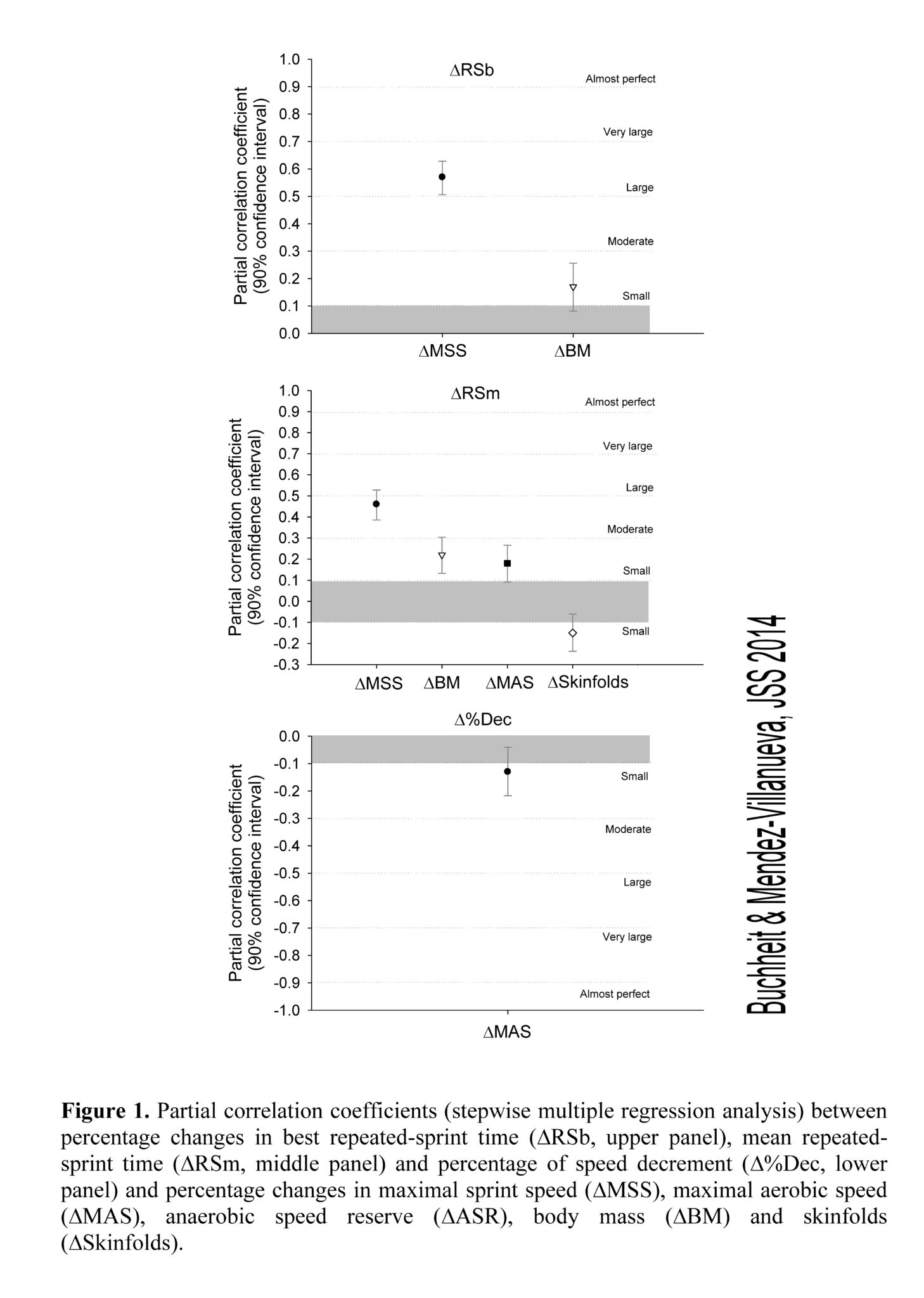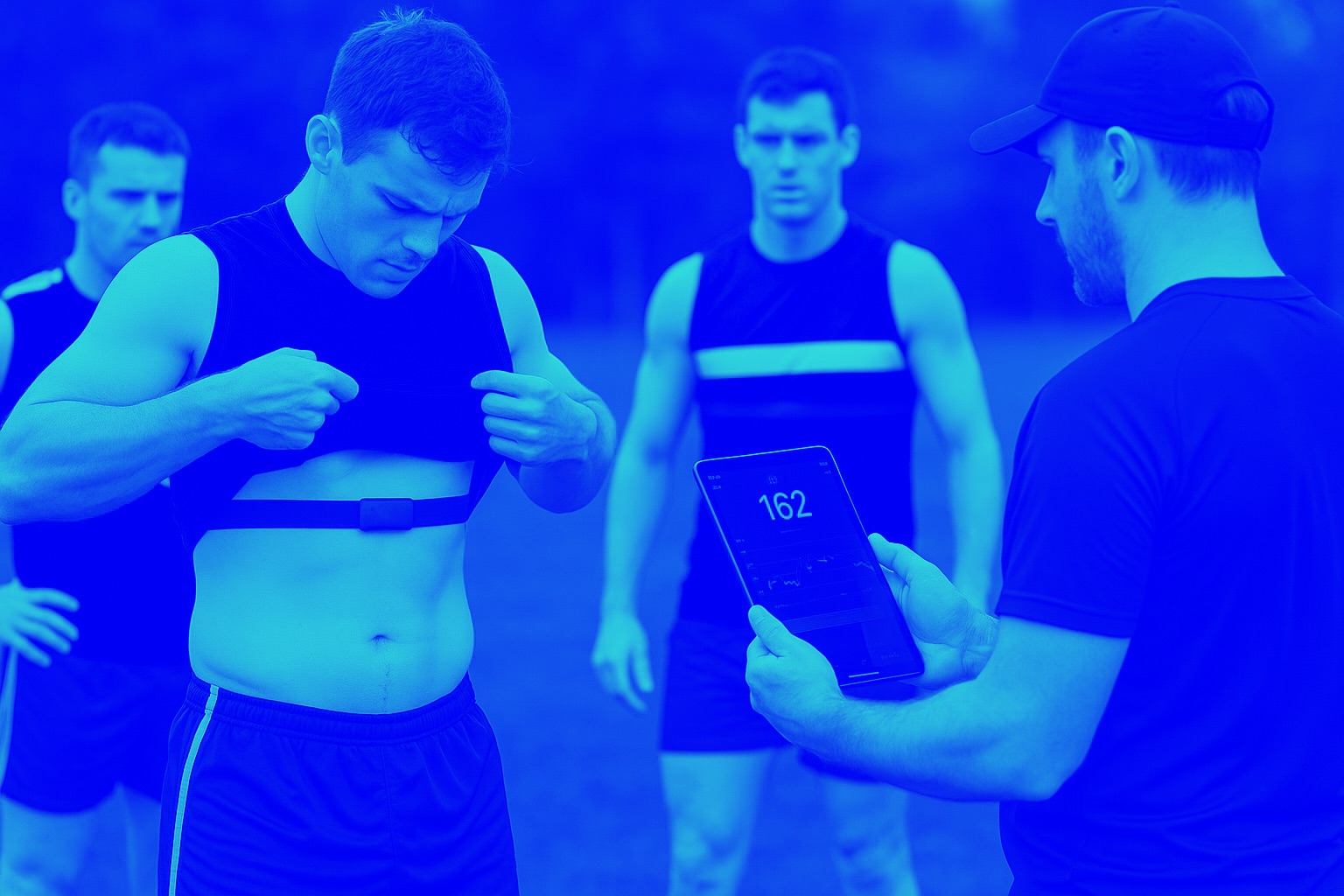Changes in repeated-sprint performance in relation to change in locomotor profile in highly-trained young soccer players
How to use changes in non soccer-specific locomotor entities (i.e., maximal aerobic and sprinting speeds) to predict changes in performance that is believed to be soccer specific (although I have my doubts too!)
 Buchheit, M. and Mendez-Villanueva, A., Changes in repeated-sprint performance in relation to change in locomotor profile in highly-trained young soccer players, J Sports Sci., 2014, In press
Buchheit, M. and Mendez-Villanueva, A., Changes in repeated-sprint performance in relation to change in locomotor profile in highly-trained young soccer players, J Sports Sci., 2014, In press
To examine the effects of changes in maximal aerobic (MAS) and sprinting (MSS) speeds, and the anaerobic reserve (ASR), on repeated-sprint performance, 270 highly-trained soccer players (14.5±1.6 yr) completed three times per season (over 5 years) a maximal incremental running test to approach MAS, a 40-m sprint with 10-m splits to assess MSS and a repeated-sprint test (10×30-m sprints), where best (RSb) and mean (RSm) sprint times, and percentage of speed decrement (%Dec) were calculated. ASR was calculated as MSS-MAS. While ∆RSb were related to ∆MSS and ∆body mass (r2=0.42, 90%CL[0.34;0.49] for the overall multiple regression, n=334), ∆RSm was also correlated with ∆MAS and ∆sum of 7 skinfolds (r2 =0.43 [0.35;0.50], n=334). ∆%Dec was related to ∆MAS (r2=0.02 [-0.07;0.11], n=334). Substantial ∆MSS and ∆MAS had a predictive value of 70 and 55% for ∆RSm, respectively. Finally, ∆ASR per se was not predictive of ∆RSm (Cohen’s = +0.8 to -0.3 with increased ASR), but the greater magnitude of ∆RSm improvement was observed when MSS, MAS and ASR increased together (0.8 vs. +0.4 with ASR increased vs. not, additionally to MSS and MAS). Low-cost field tests aimed at assessing maximal sprinting and aerobic speeds can be used to monitor ∆RS performance.
Key words: football association; repeated-sprint ability; maximal sprinting speed; maximal aerobic speed; anaerobic speed reserve



